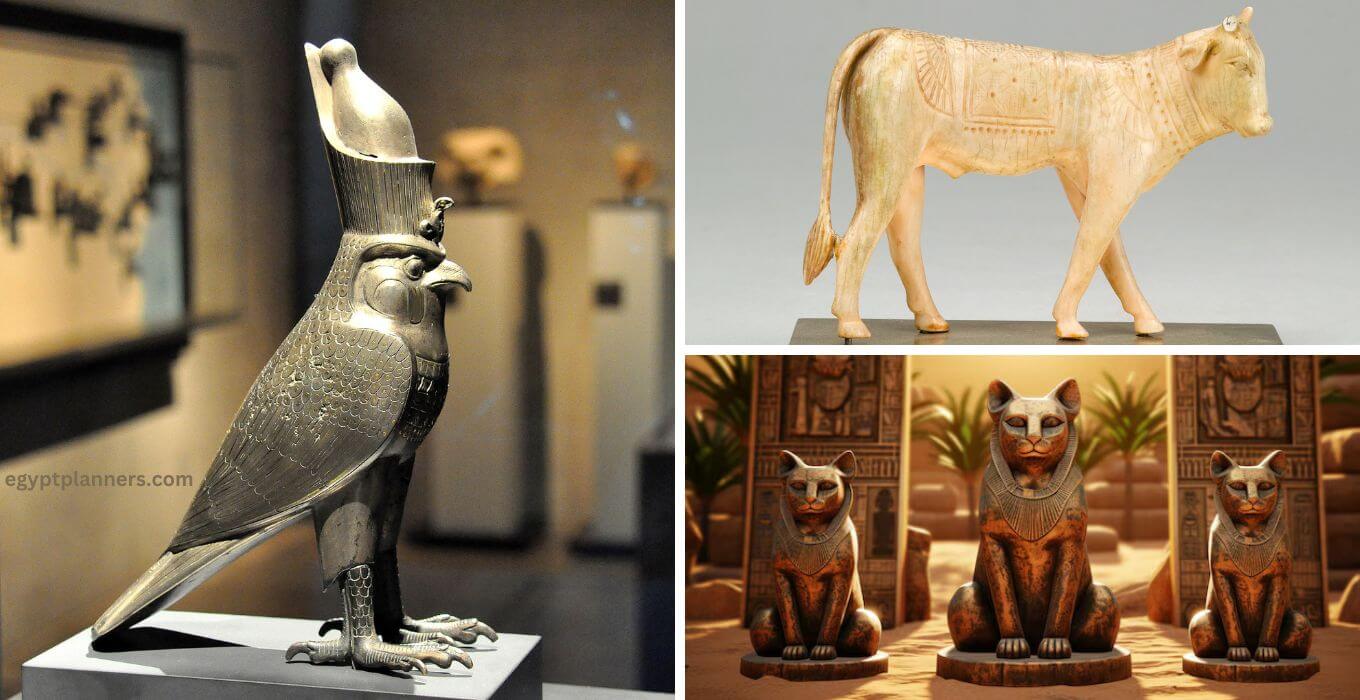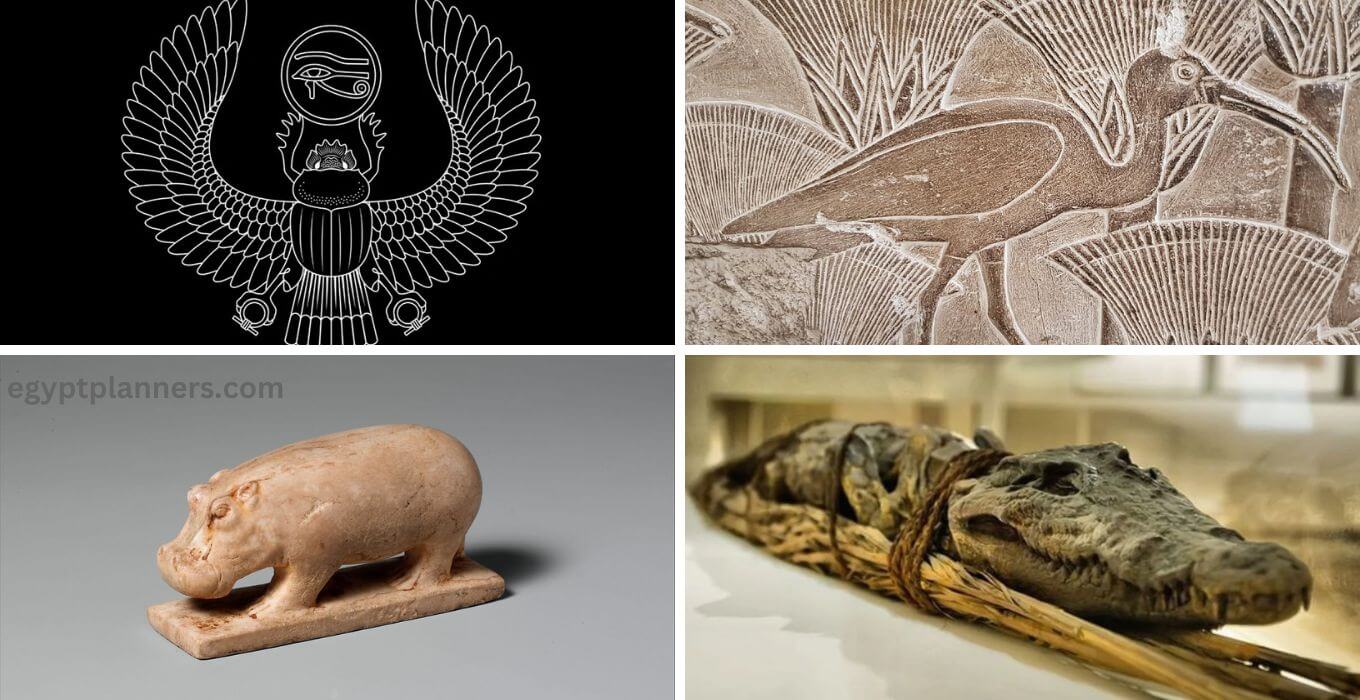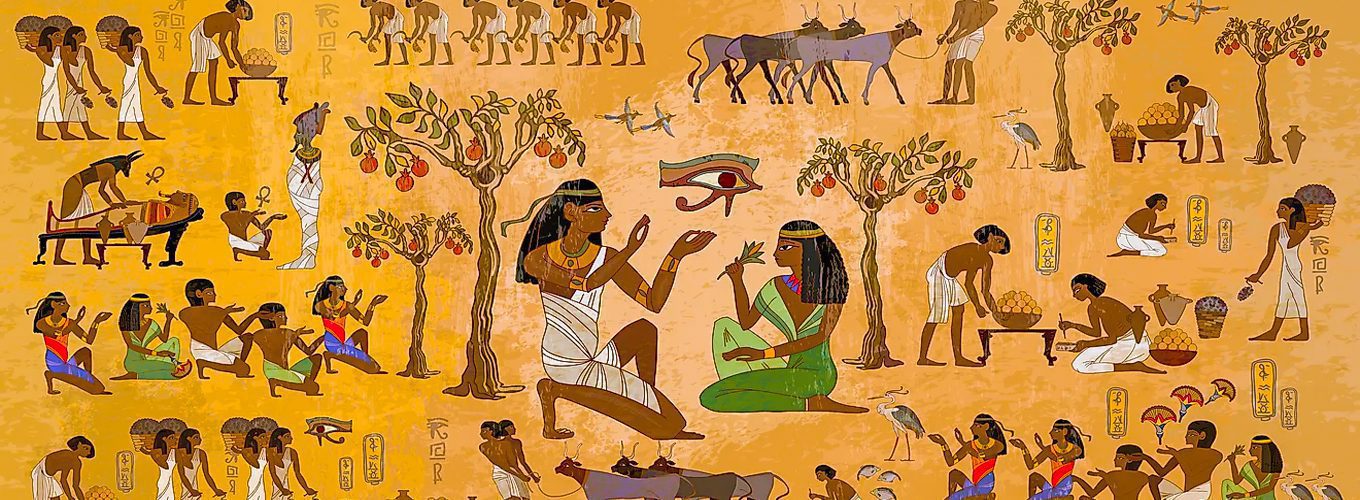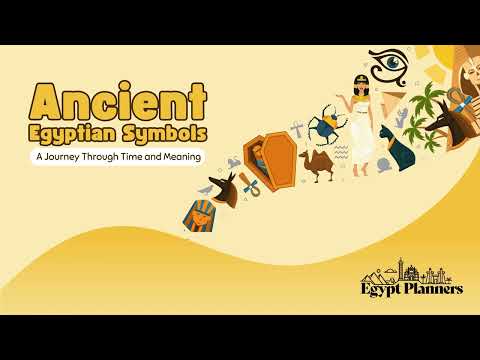Revered Animals in Ancient Egypt Nyt Crossword, In the vast tapestry of ancient civilizations, none quite captures the imagination like Ancient Egypt. Among the myriad facets contributing to its enigmatic allure, the reverence for animals is a distinctive and intriguing feature.
Animals in Ancient Egypt weren’t mere creatures; they were revered and held profound significance in religious beliefs, daily life, and cultural symbolism. From the majestic feline guardians to the industrious scarab beetles, each creature played a role in the intricate web of Egyptian spirituality.
As we delve into the intriguing world of ancient Egypt, our journey takes an unexpected twist by exploring the New York Times (NYT) crossword puzzle theme that pays homage to these revered animals.
Discover Egypt and Know More About ancient Egypt history
Key Takeaways
- Sacred Animals: Certain animals, like cats, ibises, and scarabs, were considered sacred and held deep spiritual significance.
- Divine Connections: Many revered animals were associated with specific deities, symbolizing their powers and attributes.
- Mummification Practices: Sacred animals were often mummified and buried with care, reflecting their importance in both life and death.
- Cultural Symbols: These animals represented concepts like protection, fertility, and rebirth, central to Egyptian beliefs.
- Art and Iconography: Animals frequently appeared in Egyptian art, jewelry, and hieroglyphs, highlighting their revered status in society.
- Protectors of the Afterlife: Many animals were believed to guide and protect the deceased in the afterlife, showcasing their enduring importance in Egyptian culture.
Historical Context of Revered Animals in Ancient Egypt Nyt
In the annals of history, few civilizations have held animals in as high esteem as Ancient Egypt. To grasp the essence of this profound reverence, one must delve into the rich tapestry of religious beliefs that intertwined with every aspect of Egyptian life. Animals weren’t mere creatures but sacred emissaries embodying spiritual significance and divine connections.
In the temples of Egypt, various animals were revered for their perceived links to gods and goddesses, playing integral roles in religious ceremonies and rituals. The importance of animals in religious beliefs went beyond the earthly realm; they were seen as conduits to the divine, symbolizing purity, protection, and the eternal cycle of life.
You can benefit from our discounted offers through the following All Inclusive Vacations to Egypt
- 7-Day Cairo with Nile Cruise Tour Package Get -100 USD
- 8 Days Cairo with 3 Nights Nile Cruise by Flight Get 10% Off + Free Activities
- 8 Days Cairo and Nile Cruise Holidays with Abu Simbel Get 7% OFF
- 10-Day Cairo, Alexandria, and Nile Cruise with Abu Simbel by Flight Get 10% OFF
The Symbolism and Roles of Animals in Daily Life in Ancient Egypt
As the sun cast its golden glow over the Nile, the symbolism of animals permeated every facet of daily life in ancient Egypt. From the majestic feline guardians adorning households to the diligent scarab beetles etched onto jewelry and amulets, animals were more than just symbols—they were living embodiments of cultural significance.
Cats, revered for their grace and protective qualities, became household companions, while scarab beetles, associated with regeneration and transformation, adorned the attire of commoners and pharaohs alike.
The symbolism wasn’t confined to adornments; animals entered daily routines, influencing everything from agricultural practices to domestic rituals. The intertwining of symbolic representation and practicality created a unique tapestry where the presence of animals in daily life was both practical and deeply spiritual.
Animal Attractions Nyt Crossword in Ancient Egypt
Exploring the rich tapestry of ancient Egypt’s history, one might be surprised to discover how animals played a significant role not only in daily life but also in religion and mythology, a theme that even modern puzzles like the NYT Crossword have touched upon.
In ancient Egypt, animals were more than just pets or farm creatures; they were revered as symbols of gods and goddesses, each holding a particular significance in the cultural and spiritual lives of the people. The lion, for example, was associated with strength and royalty, often depicted alongside Pharaohs or as the powerful Sphinx guarding the pyramids.
These animals, among others, are often clues in crossword puzzles, reflecting their enduring influence on how we perceive ancient civilizations.
By understanding the roles animals played in ancient Egypt, we gain a deeper appreciation for the intricate connections between nature and belief systems that fascinate us today, making them a fitting subject for intellectual challenges like crosswords that weave history, mythology, and language into a single thread.
Discover Greatest Revered Animals in Ancient Egypt

The animals revered in ancient egypt were not merely pets or symbols; they were embodiments of gods, protectors of the people, and integral to the spiritual and daily lives of the Egyptians:
1-The Sacred Cat (Mau): Cat Egyptian Symbol
Cats held an unparalleled position in Ancient Egyptian society. Known as Mau, they were revered for their grace, agility, and protective nature. The Egyptians believed that cats were the physical manifestation of the goddess Bastet, the deity of home, fertility, and childbirth. Bastet was often depicted as a lioness or as a woman with the head of a lioness or domestic cat.
Symbolism and Worship
Cats were seen as guardians against evil spirits and disease, particularly those caused by rats and snakes. The reverence for cats was so profound that harming a cat, even accidentally, was considered a grave crime, often punishable by death. In homes, cats were cherished members of the family, and upon their death, they were often mummified with the same care given to humans.
Cultural Impact
The city of Bubastis was the center of worship for Bastet, where annual festivals drew thousands of devotees. These celebrations were marked by music, dance, and feasting, highlighting the joy and prosperity associated with the goddess and her feline avatars.
2-The Majestic Falcon Horus: Revered Animal Egypt
The falcon, represented by the god Horus, symbolized kingship, power, and the sky. Horus, one of the most significant deities in Egyptian mythology, was often depicted as a falcon or as a man with the head of a falcon. He was the son of Osiris and Isis, and his battles against the god Seth to avenge his father’s death were central to the Egyptian understanding of justice and legitimacy.
Symbolism and Worship
Falcons were admired for their keen vision and hunting prowess, embodying the qualities of vigilance and swiftness. As Horus, the falcon became a symbol of divine kingship, and every pharaoh was considered the earthly embodiment of Horus, the living god. This association underscored the ruler’s role as a protector and maintainer of order.
Cultural Impact
Temples dedicated to Horus, such as the Temple of Edfu, were architectural marvels and centers of religious activity. These temples featured elaborate carvings and inscriptions depicting the mythology and deeds of Horus, reinforcing the god’s significance and the falcon’s esteemed status in Egyptian culture.
3-The Mighty Bull (Apis): Egyptian God of Death and Rebirth Nyt
The bull was revered in Ancient Egypt as the Egyptian Symbol of Life Nyt Crossword. The most notable sacred bull was Apis, associated with the god Ptah and later with Osiris. Apis was believed to be the intermediary between humans and gods, a powerful symbol of life and death.
Symbolism and Worship
The Apis bull was carefully selected based on specific markings believed to be divine signs. Upon its death, the bull was mummified with great ceremony, and a new Apis bull was sought to continue the sacred lineage. The bull represented the cyclical nature of life, death, and rebirth, mirroring the agricultural cycles that sustained Egyptian society.
Cultural Impact
The Serapeum of Saqqara, a burial place for the Apis bulls, stands as a testament to the reverence afforded these animals. The grand processions and rituals associated with Apis underscore the bull’s integral role in Egyptian religious life and its symbolic connection to the divine.
4-The Wise Ibis (Thoth): Head of Egyptian God Thoth Nyt
head of the Egyptian god thoth nyt “Ibis’, with its distinctive long beak and elegant stature, was associated with the god Thoth, the deity of wisdom, writing, and knowledge. Thoth, often depicted as a man with the head of an ibis or as a full ibis, was credited with the invention of hieroglyphs and was considered the scribe of the gods.
Symbolism and Worship
Ibis birds were seen as symbols of intellectual pursuits and divine wisdom. They were often kept in temple complexes, where they were cared for and honored. The sacred ibis was believed to embody the essence of Thoth, aiding in the preservation and transmission of knowledge.
Cultural Impact
The Temple of Thoth in Hermopolis was a center of learning and religious activity. The ibis, as a representation of Thoth, played a crucial role in rituals and ceremonies aimed at gaining divine insight and guidance. This association with knowledge and writing underscores the ibis’s importance in maintaining the cultural and intellectual heritage of Egypt.
5-The Powerful Crocodile (Sobek): Revered Animal Ancient Egypt Nyt
The crocodile was both feared and revered in Ancient Egypt, embodying the dual nature of protection and destruction. Sobek, the crocodile god, was associated with the Nile’s might and fertility. He was often depicted as a man with the head of a crocodile or as a full crocodile.
Symbolism and Worship
Crocodiles were seen as powerful creatures that could control the waters of the Nile, essential for agriculture and survival. Sobek was worshiped as a protector of the people, ensuring the fertility of the land and the strength of the pharaoh. His ferocity also symbolized the might of the king and the military prowess of the Egyptian state.
Cultural Impact
The Temple of Kom Ombo, dedicated to Sobek and Horus, highlights the crocodile’s dual symbolism. Mummified crocodiles found at this site reflect the reverence and fear associated with Sobek. The crocodile’s role in mythology and its physical presence in the Nile underscore its significance in Egyptian daily life and spiritual beliefs.
6-Scarab Beetle Meaning: One of the Famous Sacred Animals in Ancient Egypt
The scarab beetle is a small, round insect that was significant in ancient Egyptian life. Known for its shiny, often black or metallic body, the scarab is best recognized for its unique habit of rolling balls of dung. This behavior was not just a quirky trait; it was crucial for its survival, as the dung served as food and a nursery for its young. The beetle’s appearance and actions made it a notable figure in the eyes of the Egyptians.
Symbolism and Worship
In ancient Egypt, the scarab was more than just an insect; it was a powerful symbol. The Egyptians associated the scarab with the sun god Ra, believing that the beetle rolled the sun across the sky daily. This connection linked the scarab to ideas of creation, rebirth, and the cycle of life. As a result, scarab amulets became popular. People wore these charms to protect themselves and to ensure safe passage to the afterlife. The scarab embodied hope and renewal, making it a beloved symbol in their culture.
Cultural Impact
The cultural impact of the scarab beetle in ancient Egypt was profound and lasting. Its image appeared in countless artifacts, including jewelry, pottery, and tomb paintings. The scarab’s symbolism influenced not only religious practices but also daily life. Today, the legacy of the scarab continues, inspiring modern art and design. Its themes of transformation and protection still resonate, showing how this ancient symbol remains relevant in contemporary culture. Understanding the scarab’s role in ancient Egypt allows us to appreciate its enduring significance throughout history.
7-Hippopotamus: Ancient Symbol of Protection
The hippopotamus, or “hippo,” is a large, semi-aquatic mammal known for its massive body and large mouth. In ancient Egypt, hippos were commonly found in the Nile River and its surrounding waters. These creatures spend much of their time in the water, which helps keep them cool under the hot sun. Despite their bulky appearance, hippos are surprisingly agile and can be quite aggressive when threatened.
Symbolism and Worship
In ancient Egyptian culture, the hippopotamus held a complex symbolism. It was associated with both chaos and fertility. On one hand, the hippo was seen as a dangerous creature that could destroy crops and threaten lives. On the other hand, it was also linked to the goddess Taweret, who represented childbirth and motherhood. Taweret was often depicted as a hippo, emphasizing the dual nature of this animal. Because of its association with both danger and protection, the hippo was revered in various rituals and amulets, aimed at ensuring safety and fertility.
Cultural Impact
The cultural impact of the hippopotamus in ancient Egypt was significant. Hippos appeared in art, jewelry, and hieroglyphics, often symbolizing both danger and protection. They were featured in tomb paintings, highlighting their importance in the afterlife beliefs of the Egyptians. The hippo’s image also served as a reminder of the balance between chaos and order in nature. Today, the legacy of the hippo continues, influencing modern art and design, as well as serving as a reminder of the deep connections between humans and the natural world in ancient cultures. Understanding the role of the hippopotamus in ancient Egypt helps us appreciate its lasting significance throughout history.

The Connection Between Animals and Egyptian Deities
In the grand pantheon of Egyptian deities, animals played a pivotal role as earthly manifestations of divine entities. Each deity was associated with specific animals, and these connections were not arbitrary but held profound significance. The hawk, for instance, soared high as the embodiment of Horus, the god of the sky.
With its mighty presence in the Nile, the crocodile became a symbol of Sobek, the god of fertility and protection. Understanding the connection between animals and Egyptian deities unveils a spiritual symbiosis that permeated the very fabric of ancient society. Animals weren’t just symbolic offerings; they were living conduits to the gods, fostering a profound relationship between the earthly and divine realms.
Some of The Ancient Symbols of Egyptian Royalty Nyt
Symbols of Egyptian royalty are rich in meaning and history, often reflecting the power and divine connection of the pharaohs. Some of the most prominent symbols include:
- Ankh: Representing life and immortality, the ankh was frequently depicted in the hands of deities and pharaohs, symbolizing their role as life-givers.
- Uraeus: The cobra symbol, often seen on the crowns of pharaohs, represented sovereignty and divine authority. It was believed to protect the ruler and ward off enemies.
- Scepter: This staff symbolizes power and authority. Different types of scepters were associated with various aspects of rulership, such as the crook (representing leadership) and the flail (symbolizing agriculture).
- Double Crown: Known as the Pschent, this crown combined the white crown of Upper Egypt and the red crown of Lower Egypt, symbolizing the unification of the two lands under one ruler.
- Scarab: This beetle was a symbol of transformation and rebirth. It was often used in amulets and jewelry, connecting the pharaoh to the divine cycle of life and death.
- Horus Falcon: The god Horus, often depicted as a falcon, represented the sky and kingship. Pharaohs identified with Horus to assert their divine right to rule.
These symbols were not only used in art and artifacts but also played a crucial role in the rituals and beliefs surrounding Egyptian royalty, highlighting their connection to the divine and their role as protectors of the land.
Clues and Answers: Ancient Egyptian Deity Crossword Clue
In the lexicon of crossword enthusiasts, the thrill lies in the solving and the artful dance between clues and answers. The Revered Animal in Ancient Egypt Crossword introduces a dimension of historical mystery, inviting solvers to decipher clues that lead to the revered animals of Ancient Egypt. Each clue is a breadcrumb in the linguistic journey, a subtle nudge toward the correct answer.
Whether it’s a feline guardian, a scarab beetle of transformation, a soaring hawk of mythology, or a crocodile associated with the Nile’s fertility, each clue is crafted with precision, blending wordplay and historical knowledge. This section of the blog post explores the intricacies of the clues, offering insights into the construction that makes solving the puzzle not just a mental exercise but a captivating journey through the annals of Ancient Egyptian symbolism.
As solvers navigate the labyrinth of clues, the moment of revelation comes with the discovery of the solutions. The solutions for Revered Animals in Ancient Egypt nyt Crossword transcend the realm of mere answers; they are gateways to the wisdom and symbolism of Ancient Egypt.
Cats, scarab beetles, hawks, and crocodiles emerge not just as letters in a grid but as gatekeepers to the historical narrative woven into the puzzle. This section of the blog post delves into the satisfaction of uncovering the solutions and exploring the cultural significance and symbolism behind each animal.
The solutions are more than resolutions; they are windows into a bygone era, allowing solvers to connect with the spiritual and cultural tapestry of Ancient Egypt.
It’s a moment of intellectual triumph where the synergy of clues and solutions transcends the grid, offering a glimpse into the mystique of the ancient world through the lens of a crossword puzzle.
FAQs About Creatures Mummified in Ancient Egypt Nyt
What is the revered animal of ancient Egypt?
The cat is one of the most revered animals in ancient Egypt. Cats were associated with the goddess Bastet, who represented home, fertility, and protection. They were highly respected and often kept as pets, and harming a cat was considered a serious offense.
What were the divine animals in ancient Egypt?
Divine animals in ancient Egypt included:
- Cats: are sacred to Bastet, the goddess of home and fertility.
- The Apis Bull: is worshiped as a living manifestation of the god Ptah in Memphis.
- Crocodiles: are associated with Sobek, the god of the Nile, and fertility.
- Ibises: Linked to Thoth, the god of wisdom and writing.
- Falcons: associated with Horus, the sky god, and a symbol of kingship.
What pets did they have in ancient Egypt?
In ancient Egypt, common pets included cats, dogs, monkeys, and birds such as falcons and ibises. These animals were often kept for companionship and had significant religious or symbolic meanings.
Conclusion About Creatures Mummified in Ancient Egypt Crossword
The mummification of creatures in ancient Egypt reflects the civilization’s intricate relationship with nature and spirituality. Sacred animals, like cats and ibis, were preserved not just for their physical forms but for their symbolic connections to gods and the afterlife. This practice highlights the Egyptians’ beliefs in protection, rebirth, and the continuity of life.
Engaging with the crossword about these mummified creatures can deepen our understanding of their cultural significance, offering insights into how the ancient Egyptians viewed the world around them. Through such explorations, we gain a richer appreciation for their unique customs and enduring legacy.
In their revered status, these animals encapsulated the essence of Ancient Egyptian civilization, serving as guardians, symbols of transformation, embodiments of mythology, and protectors of fertility.
Don’t miss check out our related:
- Top 30 Important Ancient Egyptian Symbols
- Eye of Horus vs Eye of Ra
- Anubis Egyptian Dog God
- 42 Ancient Egyptian Amulets
- Egyptian Pharaohs
- Top 5 Egyptian Symbols for Power
- Top 8 Egyptian Symbols for Strength
- Top 15 Ancient Egyptian Good Luck Symbols
- Top 28 Egyptian Symbols Of Protection
- Ancient Egyptian Goddess Bastet


